Kinesio Taping to Promote LE Circulation and Lymph Activation
Posted on:
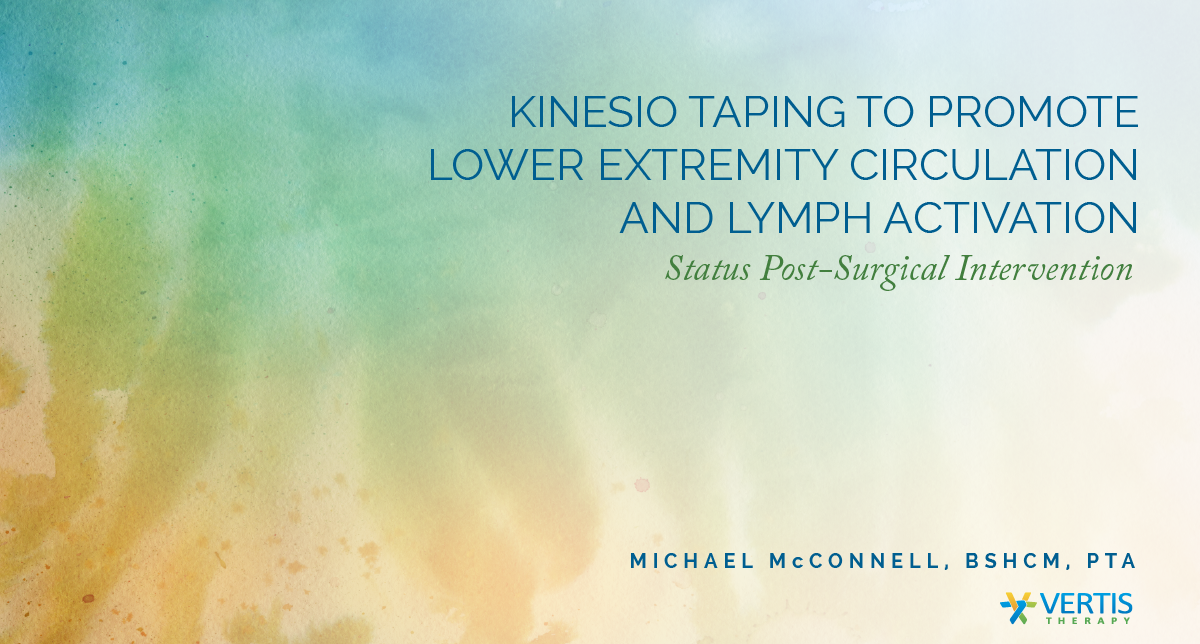
Michael McConnell, BSHCM, PTA
Kinesiology tape (k-tape) is an amazing therapeutic tool for rehab providers and can be used in a multitude of ways for various musculoskeletal, pain, and circulatory ailments. Knowledge of k-tape application, anatomy, and the stretch placed on the tape are all considerations in achieving life-changing outcomes. Before I started implementing k-tape in my treatments, I was a skeptic. I did not see at the time how applying tape to the surface of the skin would help anyone. I have been very fortunate to learn from some amazing therapists that have encouraged me to advance my knowledge surrounding k-tape and the applications behind it. In this article, I will be talking about a particular k-tape technique that I learned from a fantastic lymphedema specialist.
Localized edema is common after major surgery, such as a Total Knee or Total Hip Arthroplasty (TKA, THA). Depending upon predisposing medical factors, the patient can present with different levels of localized edema and ecchymosis (bruising). Ecchymosis is the pooling of blood under the skin as a result of the trauma to local capillaries surrounding the surgical site. Excessive bruising surrounding the surgical site can limit muscle length interfering with tissue contractibility, joint range of motion, and disrupt cellular exchange responsible for effective healing. K-tape can be used to activate ascending and descending lymphatic tracks of the involved extremity to reduce edema and shorten the time needed to evacuate pooled blood under the surface of the skin. Similar taping applications are available for OTs as well in the upper extremities. Patients who undergo a Rotator Cuff Repair or Total Shoulder Arthroplasty (RCR, TSA) will also benefit from this same k-tape technique. Normal staging for bruising color appearance and the general time needed to resolve a bruise is largely dependent on the patient and his or her predisposing medical factors. Someone with a cardiovascular or circulatory condition may experience longer healing times to resolve bruising and the effects of localized edema.

The following images are from two patients that had both recently undergone a TKA. The same taping technique was provided to both patients three days postoperatively. Patient A…had received taping on two different occasions, and experienced excessive bruising on the proximo-lateral portion of her R thigh, and over the Gastrocnemius and Soleus muscle bellies. Patient B demonstrated with significant bruising and edema along the medial and posterior portions of the length of her L LE, going as far inferiorly as mid-calf and superficial to the Gastrocnemius mm belly.
Patient A, Second k-tape application Patient B, First and only k-tape application
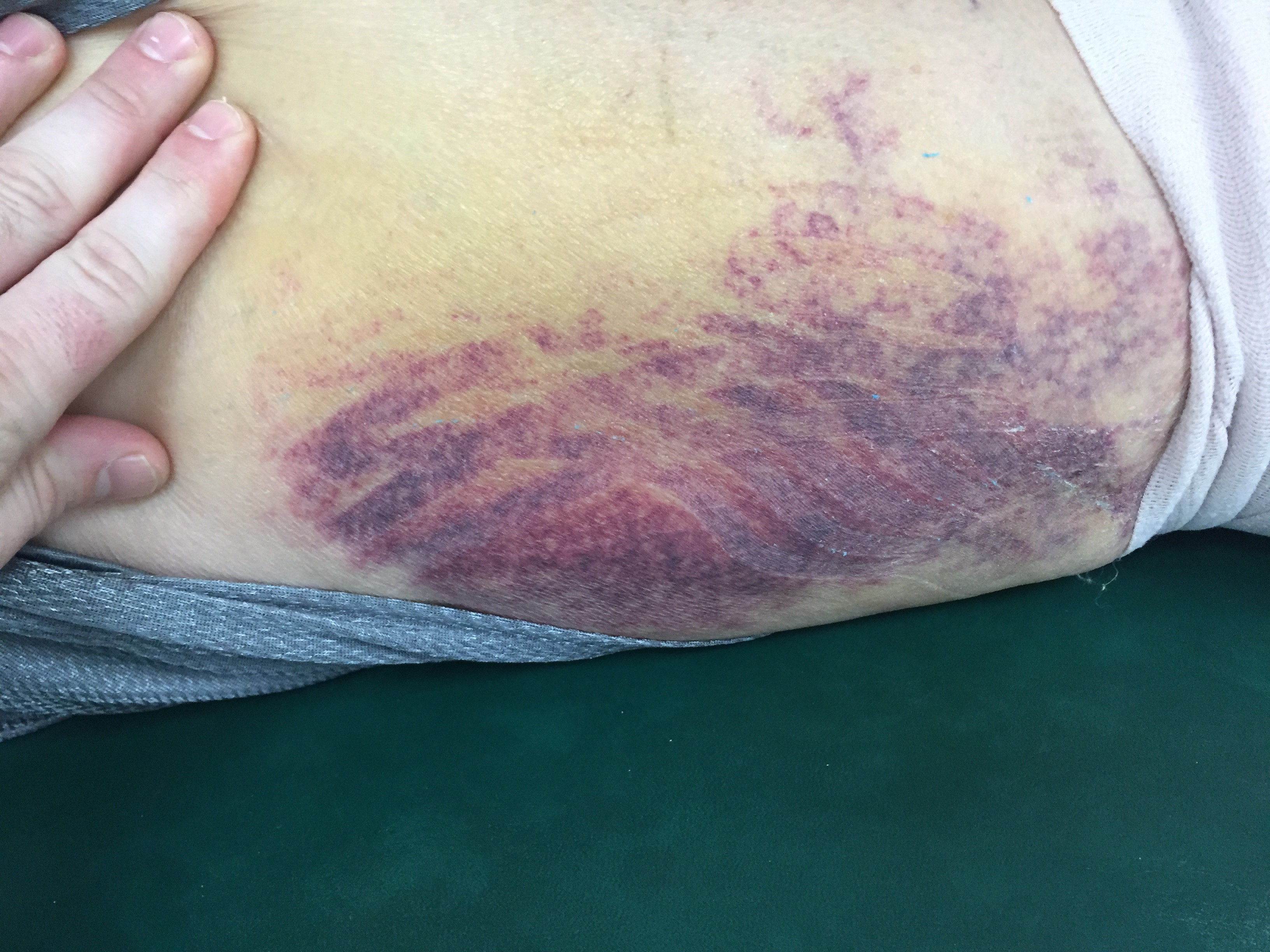
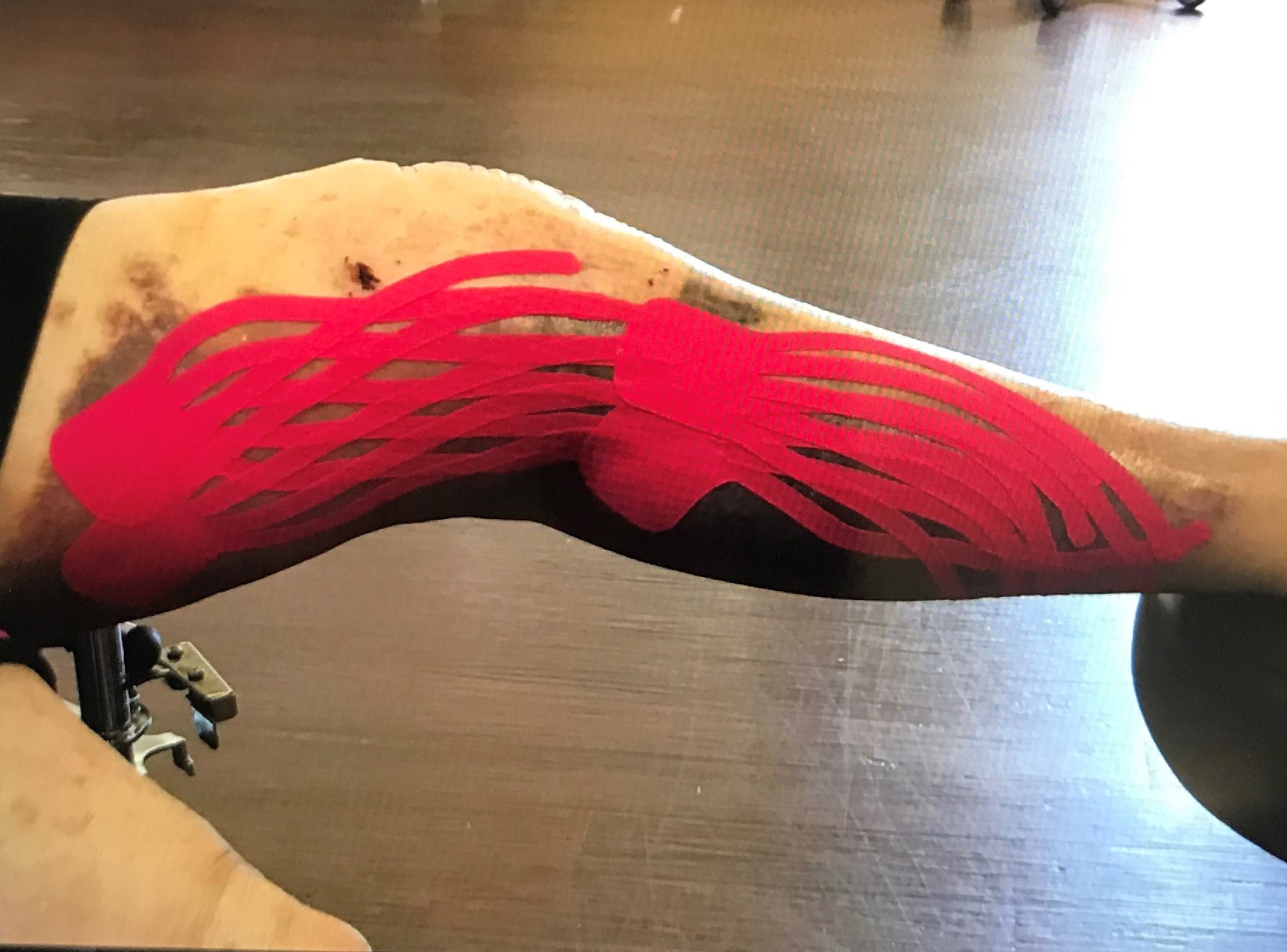
If you look at the image from Patient A, you will see where the k-tape had been previously removed. The reason for this was that Patient A did not want me to share the taping technique until she was able to see “Positive results.” Two days after application of the fan taping, she became very excited and agreed to let me share her images and signed a release. I removed the tape to capture the above image and then reapplied to show how fast results can be achieved. Patient B had one k-tape application using the fan technique. The images below are the results after five days. Both patients demonstrated with gross reduction in edema, bruising, discomfort, and improved range of motion.
Patient A after five days Patient B after five days
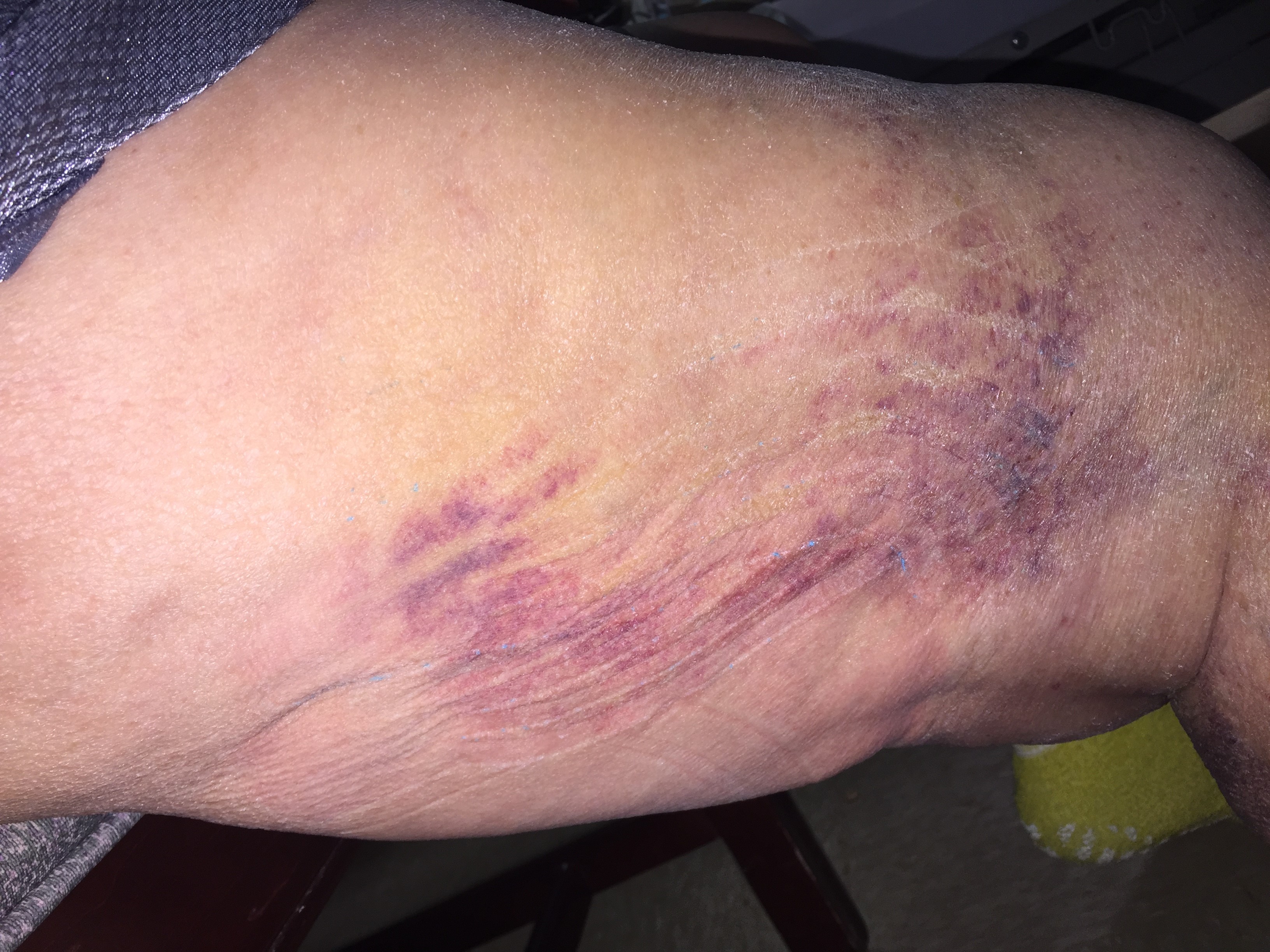
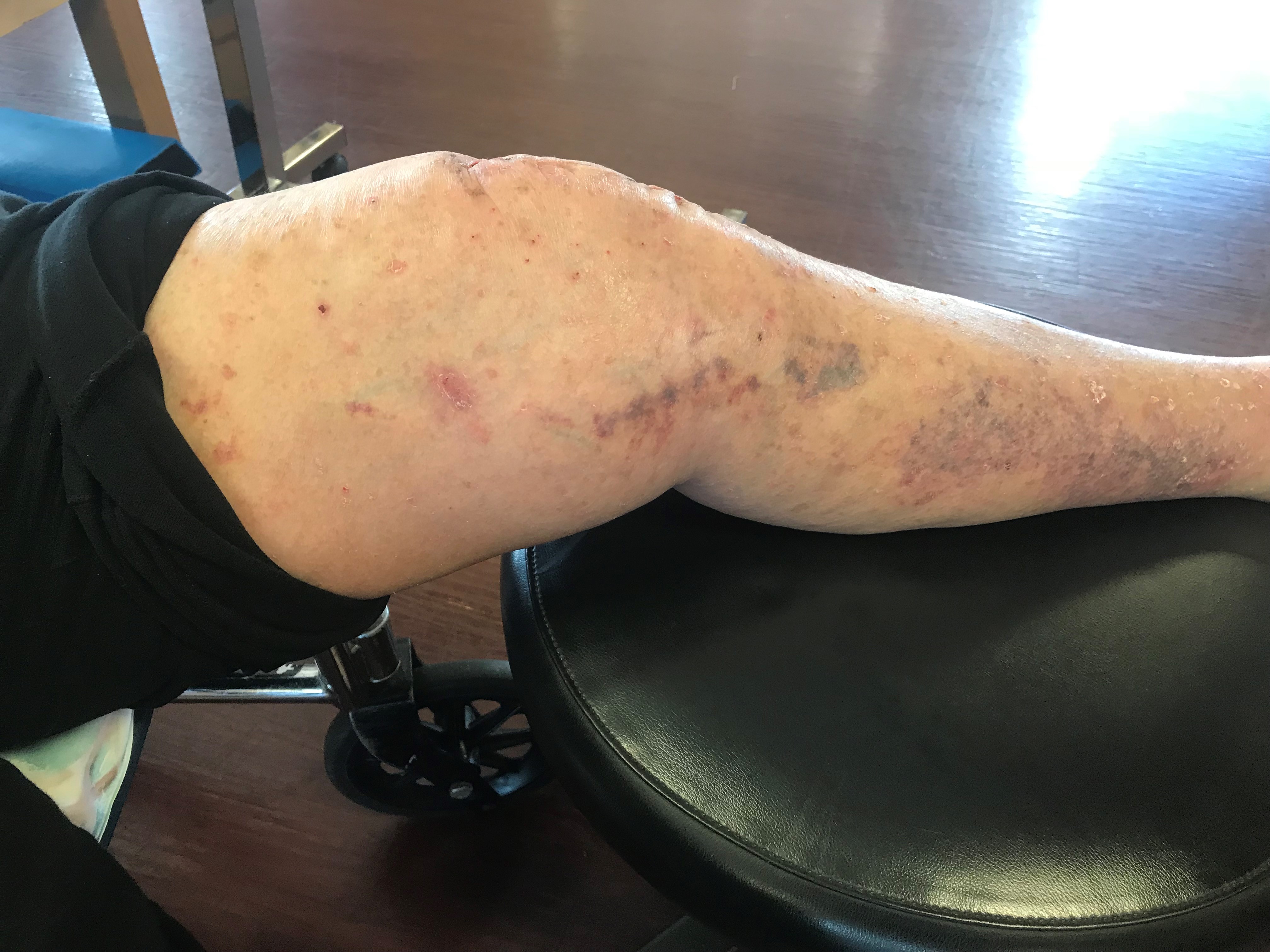
Here is an additional photo from five days after application of k-tape to Patient A’s Gastroc/Soleus mm bellies:
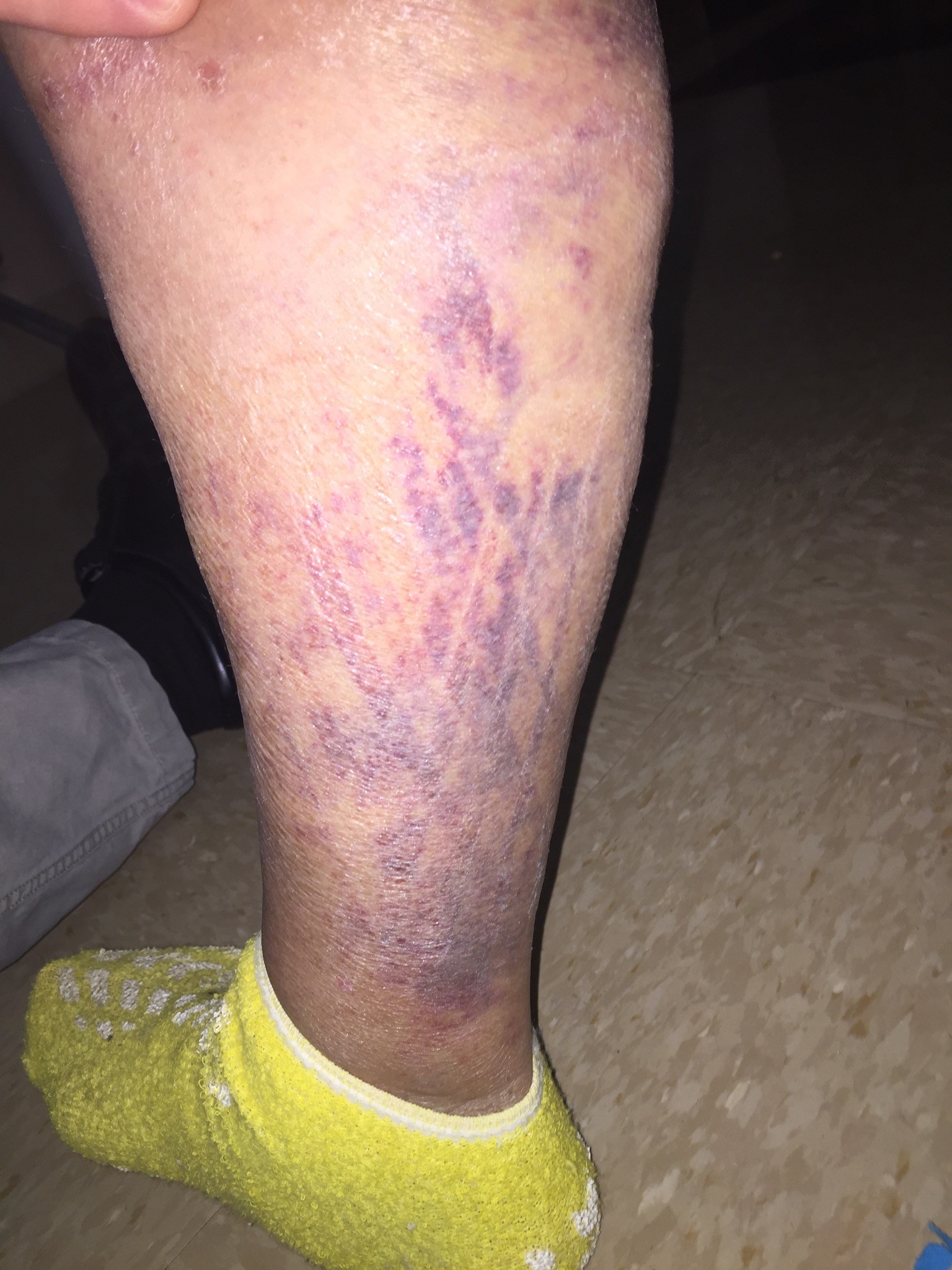 During k-tape application, I like to use two fans per site area for two reasons. The first is to maximize surface area and coverage of the k-tape over the skin. With an increased surface area, the tape is effectively creating a pull or gentle lift on the skin, freeing up tension in the tissue and allowing for free movement of underlying edema. The second is to increase the likelihood that I am applying the tape directly over a lymph vessel or vein.
During k-tape application, I like to use two fans per site area for two reasons. The first is to maximize surface area and coverage of the k-tape over the skin. With an increased surface area, the tape is effectively creating a pull or gentle lift on the skin, freeing up tension in the tissue and allowing for free movement of underlying edema. The second is to increase the likelihood that I am applying the tape directly over a lymph vessel or vein.
The placement of the anchor and direction of pull on the k-tape tendrils is critical. Knowledge of the relative location of lymph nodes, vessels, and flow direction will assist with successful fluid evacuation. The descending tracks are located on mostly the lateral and latero-anterior portion of proximal thighs and descend to the dorsum of the foot. The ascending tracks proceed along the medial aspect of the lower leg up to the thigh, and then the inguinal area. Lymph nodes in the lower extremities are found mostly on the posterior and posterior-medial portion of the knee and in the inguinal area. The anchor of the tape is to be applied over the location of lymph nodes or a large group of lymph vessels.
Once the anchor is placed, I apply each k-tape tendril individually. The desired amount of stretch is provided to each tendril and placed in the direction that will assist with lymph flow. If you look at Patient B’s initial taping application, the k-tape fans are separate but overlap medial to the knee joint. The purpose of this is to keep a sustained and uninterrupted direction of pull to target deeper structures. The pull force from the tape frees up space for movement of fluid beneath the surface of the skin. The k-tape will also affect the pull of the myofascia under the skin to facilitate improved function of the ascending tracks of the Lymph and Circulatory systems.
When taping to promote fluid movement, it is essential to make sure that your patient does not succumb to any ill effects. You will want to make sure that your patient does not have CHF (Congestive Heart Failure) as this taping technique is contraindicated. CHF patients already have a compromised cardiovascular system, and movement of large quantities of fluid throughout the body can overload and stress the heart muscle. Prior to applying any k-tape to your patient, make sure that he or she is not allergic to the tape by using a trial piece on the patient and waiting for a day to check for any redness, itching, or swelling around the taping site. If any of these symptoms are present, k-tape will also be contraindicated as it indicates a localized or systemic allergic reaction.
An intact integumentary system (skin organ) is required to ensure successful outcomes. The activation of k-tape comes from the stretch placed on the tape during application and requires dry, intact skin. A compromised integumentary system where wounds are present, taping over high friction areas where the tape can be unintentionally removed, or high moisture areas are not ideal application environments for k-tape.
The benefit of utilizing this k-tape application is that it assists in decreasing acute and localized reactions status post-surgical intervention using multiple body systems. Healing time is shortened as a result of increased circulation and free movement of fluid in the soft tissues. Soft tissue pliability is improved allowing for increased joint AROM. The patient is more comfortable due to the decrease in edema and will be more receptive to work harder during rehab. This allows for concentration in higher dynamic therapeutic interventions, which will shorten rehab duration and improve functional outcomes.

